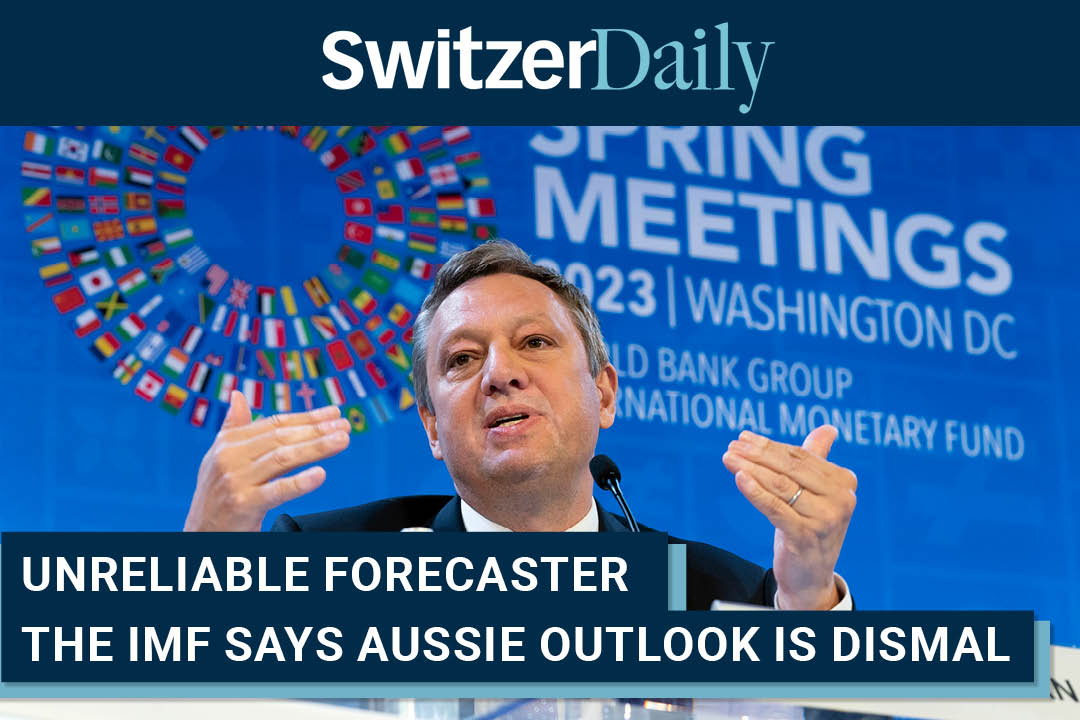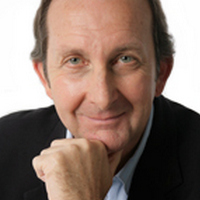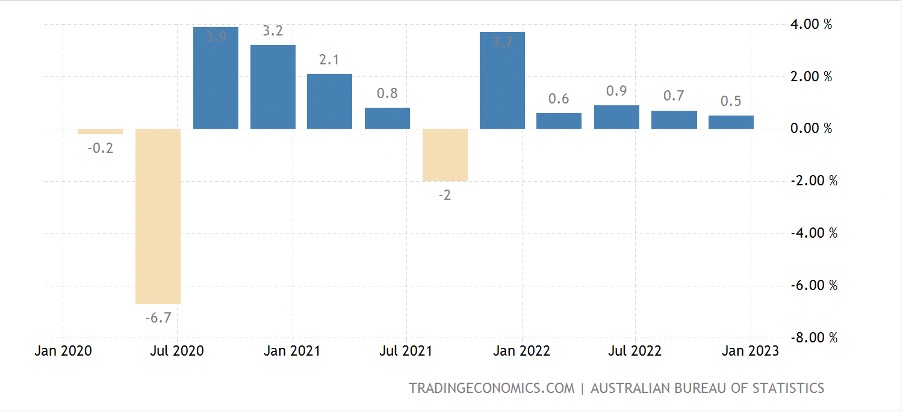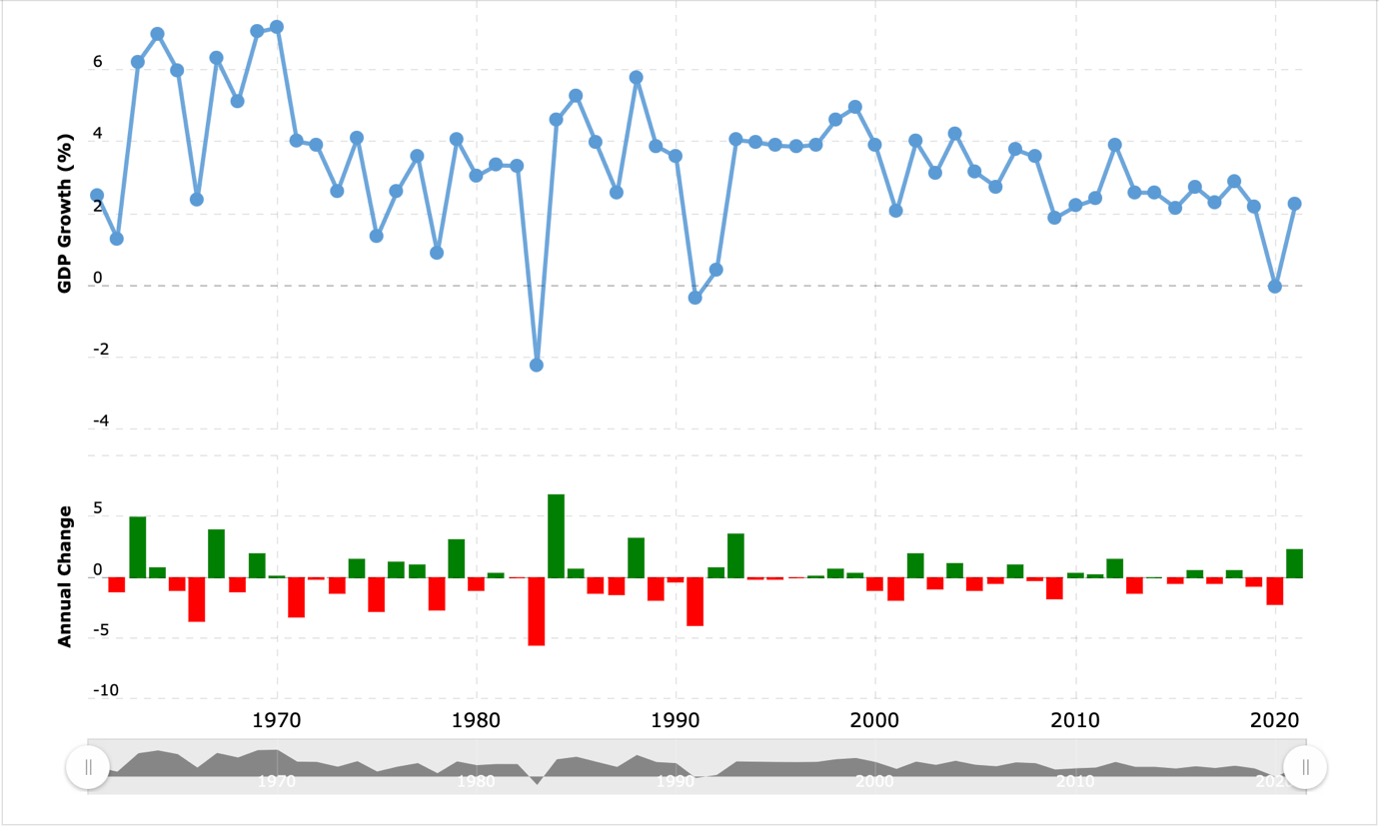

Minority groups are allowed to poke fun at their community so it is with great relaxation that I discriminate against a very small group called economists. As one myself, I’ve often wondered if economists were put on this earth to make weather forecasters and astrologers look good!
These ‘nasty’ thoughts came back to me as the International Monetary Fund (IMF) has told us that we’re in for dismal times ahead. After 38 years of public commentary on the Oz economy, I know the IMF is no Oracle of Delphi, though the Oracle’s reputation for being right was largely exaggerated by those who made a nice living out of making predictions.
Economists are always predicting recessions and often wrong. Australia really exposed a lot of economists when we went over 30 years without a recession, and it took a global pandemic to eventually see us drop into negative economic growth for two quarters. Even then, it was only for two quarters, which is the minimum number of quarters needed to declare a recession has happened.
Australia economic growth

Once again, the economic doctors (Treasurer Jim Chalmers and the RBA’s Phil Lowe) are being given support from an ‘august’ body like the IMF for their tough job ahead, which in a sense makes their job easier.
I laugh at the use of the word “dismal” when countries like the USA, the UK and many in Europe look like specials to end up in recession because of aggressive interest rate rises, the Ukraine war, its impact on petrol prices, the recent silliness of China with its excessive lockdowns and banking crisis concerns. In fact, the IMF probably got a few things right, including, as The Australian reports, “…real GDP growth here this year and next is forecast to be above that expected in the US, Canada, Japan, Germany, France, Italy and Britain, all of which are vulnerable to pronounced downturns, higher unemployment and rising debt levels.”
To me, that’s the story! Once again, we’ll do better than most countries we compare to. By the way, the IMF is only saying our economic performance will be “dismal” compared to our Asian neighbours, which is often the case.
Here are the relevant IMF predictions for us in a nutshell:
1. Economic growth will be around 2%.
2. Population growth will be a little better than 2%.
3. Inflation to remain above the RBA’s target of 2-3%.
4. Unemployment now at 3.5% will rise over 4%.
5. China will grow at around 5.2%, which is a plus for us.
Over my 38 years of work, I’ve seen this catastrophic stuff in newspapers and websites, and because of their historical inaccuracies they just serve to unnecessarily worry people. This chart below from the World Bank shows economic growth around 2%. While this is less than what we’re used to, we’ve had plenty of years in the 2% growth band.

Given what we’ve been through (pandemic deaths and illness, long lockdowns, runaway inflation followed by central bank interest rate torture, with Russia and China not helping global economic growth), I reckon that even if the ‘not all that reliable’ IMF forecasts work out to be right, we would’ve got off easy!
One final point about the IMF’s forecast about our population growth of around 2%, which would be historically high. There’s a more positive take from all this. When I researched why we were able to grow for 30 years without a recession, this is what I found from a Parliamentary Report in 2018: “There are many factors that have driven Australia's strong period of growth since the last recession in 1991, including strong population growth, robust export growth and balanced growth across industries.”
Population growth and China’s economic rebound and its demand for our exports give\ us a chance to do a lot better than these IMF “dismal” forecasts.